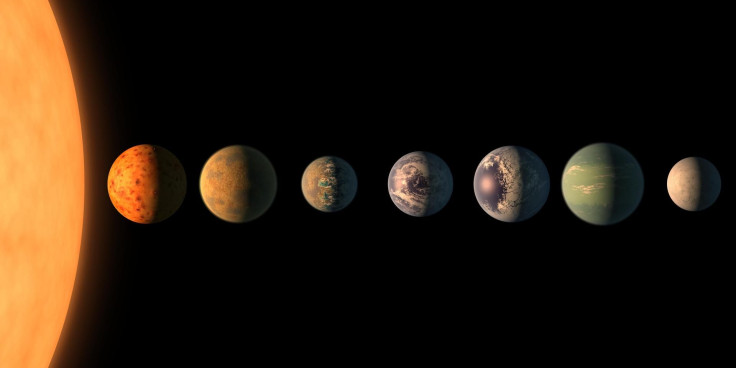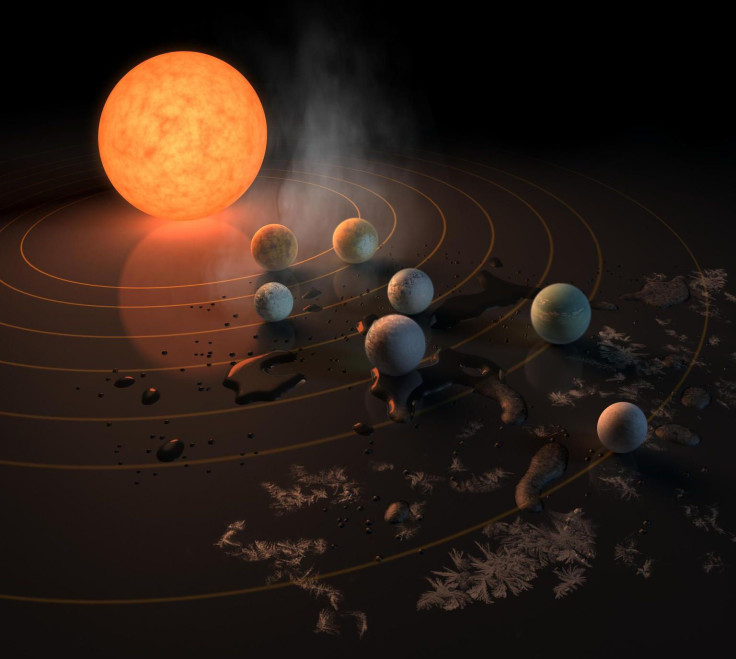Exoplanets Of TRAPPIST-1 System Orbit In Synchronized Musical Harmonies, Making It Stable

TRAPPIST-1 is a planetary system over 40 light years away from Earth, and the discovery of seven Earth-sized exoplanets orbiting their star was announced in February. Three of the stars are within the habitable zone of the star, making them and the system as a whole a very exciting place for space exploration, particularly the search for life as we know it.
However, alongside its discovery, scientists also said at the time that the system was very unstable, and that the intersecting orbits of its planets would likely smash them into each other in less than a million years. But research published as an open-access study in the Astrophysical Journal Letters, by scientists and musicians from the University of Toronto (UofT) in Canada, explains how the planets in the TRAPPIST-1 system have stable orbits.
The orbits of the planets were found to be in a resonant configuration, in which, according to a statement on the UofT website, “planets’ orbital periods form ratios of whole numbers. For example, Neptune orbits the sun three times in the amount of time it takes Pluto to orbit twice. This is good for Pluto because otherwise it wouldn’t exist. With the two planets’ orbits intersecting, if things were random they would eventually collide. But because of resonance, the locations of the planets relative to one another keeps repeating.”
Read: Kepler Looks At 7-Planet Star System
Dan Tamayo, a postdoc researcher at UofT Scarborough’s Centre for Planetary Science, and one of the co-authors of the study, said in the statement that the projections made by the initial studies of TRAPPIST-1 were not precise.

“It's not that the system is doomed, it’s that stable configurations are very exact. We can’t measure all the orbital parameters well enough at the moment so the simulated systems kept resulting in collisions because the setups weren’t precise.”
The phenomenon of resonance is also used in music, where simple frequency ratios between two notes make them pleasing to the ear. Using this fact, the researchers created an animation, which shows the movement of the planets superimposed with musical notes. A piano note plays each time a planet passes the host star, and a drum beats every time a planet overtakes its closest neighbor.
Another UofT astrophysicist Matt Russo, who plays jazz and also co-authored the study, found a resemblance between the resonance of TRAPPIST-1 and music theory.
“There’s a rhythmic repeating pattern that ensures the system remains stable over a long period of time. … Most planetary systems are like bands of amateur musicians playing their parts at different speeds. TRAPPIST-1 is different. It’s a super-group with all seven members synchronizing their parts in nearly perfect time,” he said.
Read: Are The TRAPPIST-1 Planets Habitable?
The star at the center of the system is anywhere between three and eight billion years old. The initial observations made of its planets suggested they would last only another half a million years or so, and the discrepancy between the two timescales led Tamayo to come up with an explanation for the system’s stability that will endure for longer.
“It would be very lucky for us to discover TRAPPIST-1 right before it fell apart so there must be a reason why it remains stable,” he said.
The study, which is available online, is titled “Convergent Migration Renders TRAPPIST-1 Long-lived.”
© Copyright IBTimes 2024. All rights reserved.





















